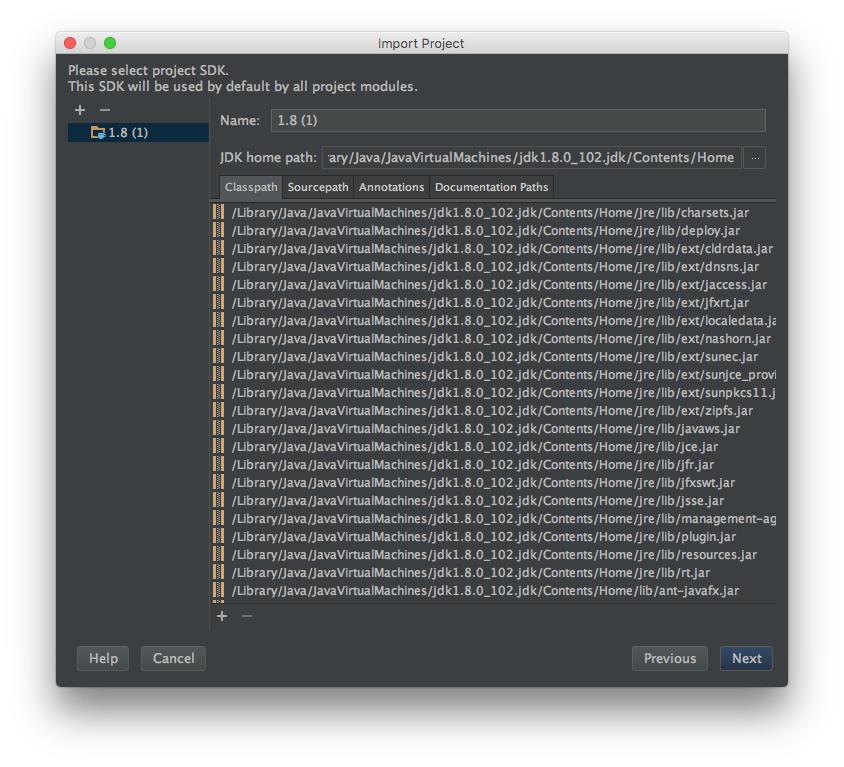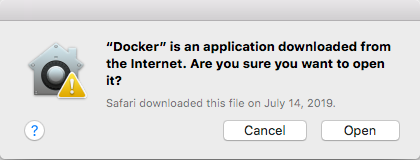- Docker Mac Install Location
- Mac Docker Install Ubuntu
- Docker Mac Install Sql Server
- Docker Install Mac M1
- Docker Osx Install Npm
- Osx Install On Pc
Install Docker Engine. Estimated reading time: 5 minutes. Supported platforms. Docker Engine is available on a variety of Linux platforms, macOS and Windows 10 through Docker Desktop, and as a static binary installation. Find your preferred operating system below. Sickcodes/docker-osx:latest - I want to try it out. Sickcodes/docker-osx:latest - I want to use Docker-OSX to develop/secure Apps in Xcode (sign into Xcode, Transporter) sickcodes/docker-osx:naked - I want to use Docker-OSX in CI/CD (sign into Xcode, Transporter) Create your personal image using:latest. And then pull your image out.
This page describes how to install and configure opam. For further help on howto use opam, either read opam --help or move on to theUsage guide.
If you run into issues creating VMs, you may need to uninstall VirtualBox before re-installing the Docker Toolbox. The following list of components is included with this Toolbox release. If you have a previously installed version of Toolbox, these installers will update the components to these versions. Sickcodes/docker-osx:latest - I want to try it out. Sickcodes/docker-osx:latest - I want to use Docker-OSX to develop/secure Apps in Xcode (sign into Xcode, Transporter) sickcodes/docker-osx:naked - I want to use Docker-OSX in CI/CD (sign into Xcode, Transporter) Create your personal image using:latest. And then pull your image out.
Docker Mac Install Location
Upgrading from a previous version
Generally, you should just reproduce the same installation steps as for theoriginal installation: upgrade from your system's package manager, or re-run thebinary installer. Opam will automatically update its internal repository at~/.opam on first run if needed (if using our installer script, a backup can bemade automatically).
To upgrade shell scripts, and enable sandboxing, don't forget to run opam init--reinit -ni.
Then see the Upgrade guide to check the changes.

Binary distribution
The quickest way to get the latest opam up and working is to runthis script:
This will simply check your architecture, download and install the properpre-compiled binary, backup your opam data if from an older version, and runopam init.
(If you have trouble with curl, justdownload the scriptand run sh install.sh)
We provide pre-compiled binaries for:

- Linux i686, amd64, arm7, arm64
- OSX (intel 64 bits, arm64)
- We do not at present provide an official Windows distribution of opam, but please see this separately maintained distribution(other platforms are available using the other methods below)
If you don't like scripts, you can just pick your downloadhere, put it in your PATH asopam, and set it as executable, e.g.
Note that this script is intended for end-users, not CI. For that purpose,you can use pre-built Docker images for variousconfigurations.
Using your distribution's package system
This is generally the recommended way, when available and up-to-date (youcan check here the latestavailable release per distribution). Here is a list of supported distributions:
Arch Linux
The opampackage is available in the official distribution. To install it simply run:
If you'd like to use the development version there is an opam-gitpackage available in the AUR.Assuming you have yay installed just run the following command:
Debian
Binary packages of opam are available for thestable,testing andunstable distributions, from the officialrepositories. You should be set with:

Exherbo
Thedev-ocaml/opampackage can be installed with the command:
You might need to add the ::ocaml-unofficial repository first:
Fedora, CentOS and RHEL
The opam package for Fedora can be installed with the command:
There is not currently a package for CentOS/RHEL. You will need to use ourpre-built binaries, or build from sources.
Mageia
The opam package for Mageia can be installed with the command:
OpenBSD
The opam package for OpenBSD can be installed with the command (since OpenBSD 5.7):
FreeBSD
Opam is available in the ports and packages tree on FreeBSD 11 or higher.
OSX
Opam packages for homebrew and MacPorts are available.homebrew need a prior installation of gpatch, as opam uses gnu-specific options.
Mac Docker Install Ubuntu
See alsohowto setup Emacs.appfor Opam usage.
Ubuntu
Versions 18.04 and newer
There is a ppa available that contains the current stable version of opam.
Versions older than 18.04
Use the binary distribution. Instructions provided at https://opam.ocaml.org/doc/Install.html#Binary-distribution
Windows
Full support for Windows is planned for opam 2.2, and we expect to provide an opam package in Chocolatey and winget. If you'd like to help out, please get in touch!
Guix & Guix System
The opam package for guix can be installed with the command:
From Sources
Getting the Sources
Sources of the latest stable version of opam are available on Github:
You can also download the full archives, including opam dependencies (thesedon't require any extra downloads, just the OCaml compiler -- 4.02.3 or laterfor the latest version):
- 2.0.2
- MD5: 8780b0dc4209451e21330b6a3e663fe9
- SHA384: 2ecbdd28840564f873af2f56fcb337d49477f4b63a39ed3878a38eb55bbda67d7561a8deee697c36d7be50ff36a8fe21
- 1.2.2
- MD5: 7d348c2898795e9f325fb80eaaf5eae8
- SHA384: 3a0a7868b5f510c1248959ed350eecacfe1abd886e373fd31066ce10871354010ef057934df026e5fad389ead6c2857d
Follow the instructions in the includedREADME.md to get opam built andinstalled from there.
Docker Mac Install Sql Server
Note that opam1.2.2 doesn't build from source with OCaml 4.06.0. Use this command to compile lib_ext
Developing with docker under OSX/ Windows is a huge pain, since sharing your code into containers will slow down the code-execution about 60 times (depends on the solution). Testing and working with a lot of the alternatives made us pick the best of those for each platform, and combine this in one single tool: docker-sync
docker-sync is:
Docker Install Mac M1
- Support for OSX, Windows, Linux and FreeBSD
- Runs on Docker for Mac, Docker for Windows and Docker Toolbox
- Uses either native_osx, unison or rsync as possible strategies. The container performance is not influenced at all, see performance
- Very efficient due to the native_osx concept
- Without any dependencies on OSX when using (native_osx)
- Backgrounds as a daemon
- Supports multiple sync-end points and multiple projects at the same time
- Supports user-remapping on sync to avoid permission problems on the container
- Can be used with your docker-compose way or the integrated docker-compose way to start the stack and sync at the same time with one command
- Using overlays to keep your production docker-compose.yml untouched an portable
- Supports Linux* to use the same toolchain across all platforms, but maps on a native mount in linux (no sync)
Besides performance being the first priority for docker-sync, the second is, not forcing you into using a specific docker solution. Use docker-for-mac, docker toolbox, VirtualBox, VMware Fusion or Parallels, xhyve or whatever!
Docker Osx Install Npm
Documentation, Installation, Configuration
Osx Install On Pc
All the information, tutorials and best practises are provided in the Documentation
